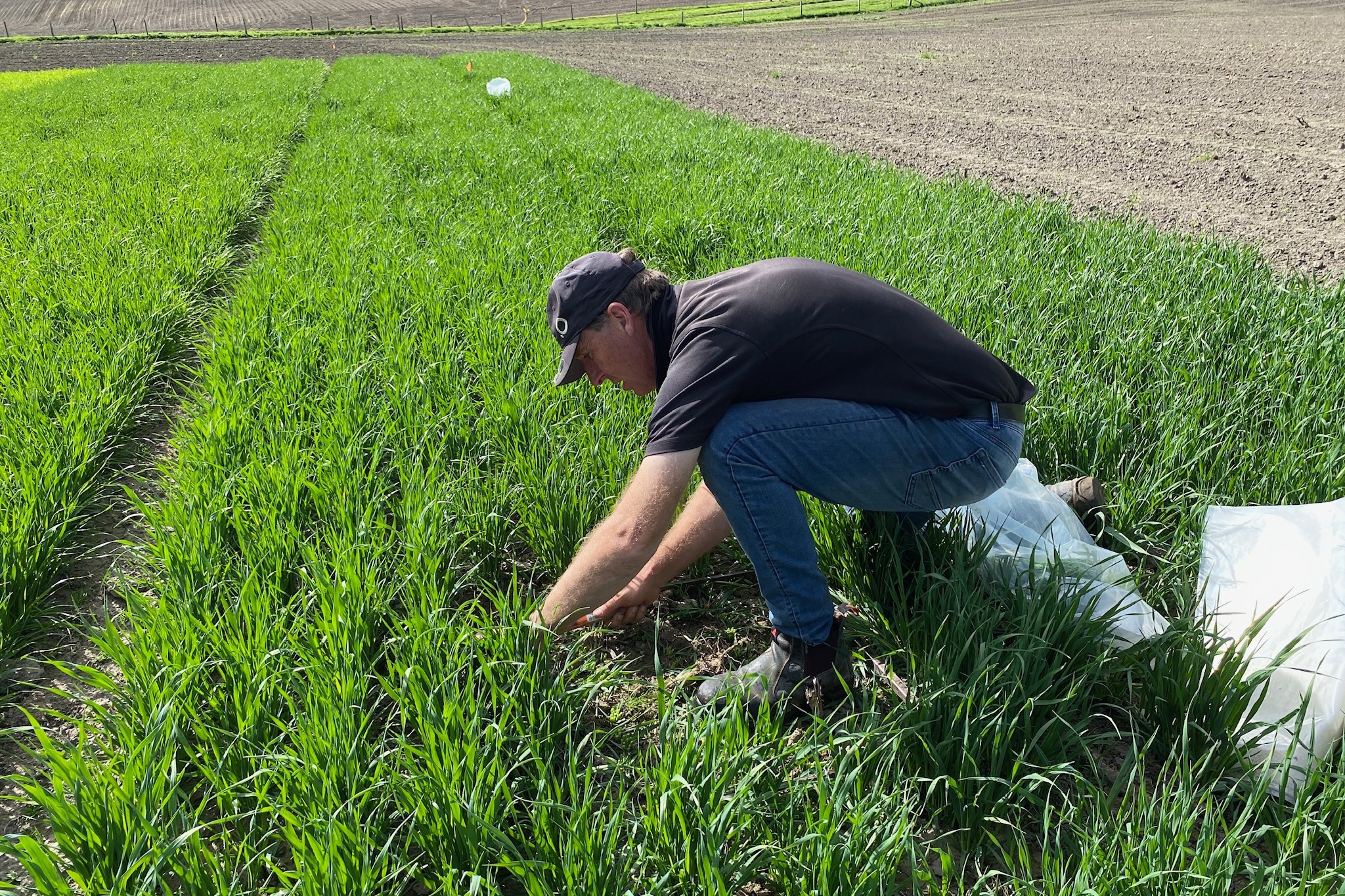New tool shows true cost
A cost of production spreadsheet from Federated Farmers is helping growers calculate the true profitability of ryegrass and white clover crops. Victoria Rutherford reports.

A cost of production spreadsheet from Federated Farmers is helping growers calculate the true profitability of ryegrass and white clover crops. Victoria Rutherford reports.
A ‘cost of living crisis’ in the herbage seed industry has growers and merchants collaborating to ensure a viable future for the industry.
With fixed and production costs steadily rising over time, some growers have struggled to make a return as industry prices for seeds have remained static and yield gains have plateaued.
However, a cost of production spreadsheet from Federated Farmers offers growers a tool with which to analyse all relevant costs.
Unlike a gross margin, the spreadsheet includes fixed costs, helping growers calculate the true profitability of ryegrass and white clover crops in the current market. It also includes return on investment.
Federated Farmers Herbage Seed chairperson John McCaw has been involved with the tool’s development from the outset and hopes it will become the industry benchmark.
“It’s all about the cost of production,” Methven-based McCaw says.

While gross margins have their place, he says analysis is simplistic and useful only for considering one crop option against another.
“A gross margin is certainly a useful tool to understand production within your farming system, but that is not the equivalent of seeing your actual profit.”
Being able to allocate a share of all those ‘other’ costs like wages of management, rates, insurance, and administration (about $1300/hectare) to an otherwise simple gross-margin assessment was a lightbulb moment for McCaw.
“You must consider your overheads: costs which must be supported by every productive hectare of your farm, and that’s what this spreadsheet does.
“I’ve been doing gross margins on our farm for 20 years, thinking I understood our cost of production. I wish I’d had this tool earlier – I think we would be farming very differently now if we had.”
Industry collaboration
While the pricing issue was recognised across the industry, the key to gaining traction has been collaboration between seed merchants, growers and industry bodies, he says.
“No one has the answers, but we all agree we’ve quantified the problem. And that was something many of the firms had been attempting to do themselves but finding they didn’t have the information available.
“We were all working on good initiatives, but the concern was that unless we were coordinated, we would be using conflicting numbers.”
A working group of eight farmers got together to establish an ‘official’ gross margin for ryegrass and white clover seed production as a basis for industry discussions.
“We sat down and opened the books – and that isn’t something that comes easily to an arable farmer,” McCaw says. “It was a very open dialogue.”
It soon became clear that rather than create an official gross margin, a calculator was needed so growers could generate their own net margin. The role of the working group then became defining the production costs.
The grower group included large- and small-scale operators, both irrigated and dryland, from different areas. Despite this, they found the figures were remarkably similar.
Averaging the costs, McCaw says they went through everything with a fine-tooth comb and put it into the spreadsheet.
“We tried to create something interactive which could be tailored to a particular farm and crop, so by the time the grower gets to the bottom of the page, they feel like they own it.”
Buy-in from merchants has been good.
Some firms have been using the spreadsheet internally to work out contract pricing for next year as well as in discussion with their parent companies, which in many cases are overseas.
The extent to which prices must increase to return growers to profit is of concern to both growers and merchants, he says.
“There has already been good positive discussion about movement in price, but to get where the spreadsheet says we need to go will be a journey – it won’t be achieved in one step.”
They need a price reset – not just an inflation adjustment.
“We’ve got to work together to get to an end point where things are back in balance. If we don’t address the issue of low profitability, then we simply won’t have a herbage seed industry in New Zealand.
“The question is how to achieve that without pricing ourselves out of the international market.”
While the Federated Farmers spreadsheet includes lamb grazing income, McCaw concedes not all arable farmers are willing or able to trade lambs.
A recent Foundation for Arable Research gross margin analysis for ryegrass seed production showed a break-even result on seed production but a profit from associated lamb trading.
“Grazing lambs requires capital, labour, and infrastructure quite separate to that of seed production.
“Having ryegrass in the system facilitates lamb grazing but this should not be used to justify a lower seed price to growers.”
Getting the word out
McCaw says feedback from growers who have used the spreadsheet tool have found it useful and, in many cases, enlightening.
The main challenge is educating those who are not attending meetings, field days or reading news publications, instead relying on word of mouth. At the other end of the spectrum are growers who may not look at it because they feel it doesn’t relate to them.
“Our hope is that the spreadsheet will become the blueprint, the gold standard; updated annually and broadened to include other crops. Rather than demanding a certain grower price for seed we want to ensure both sides have the information they need to make an informed decision and let the market operate,” McCaw says.
The spreadsheet is available at fedsnews.co.nz




